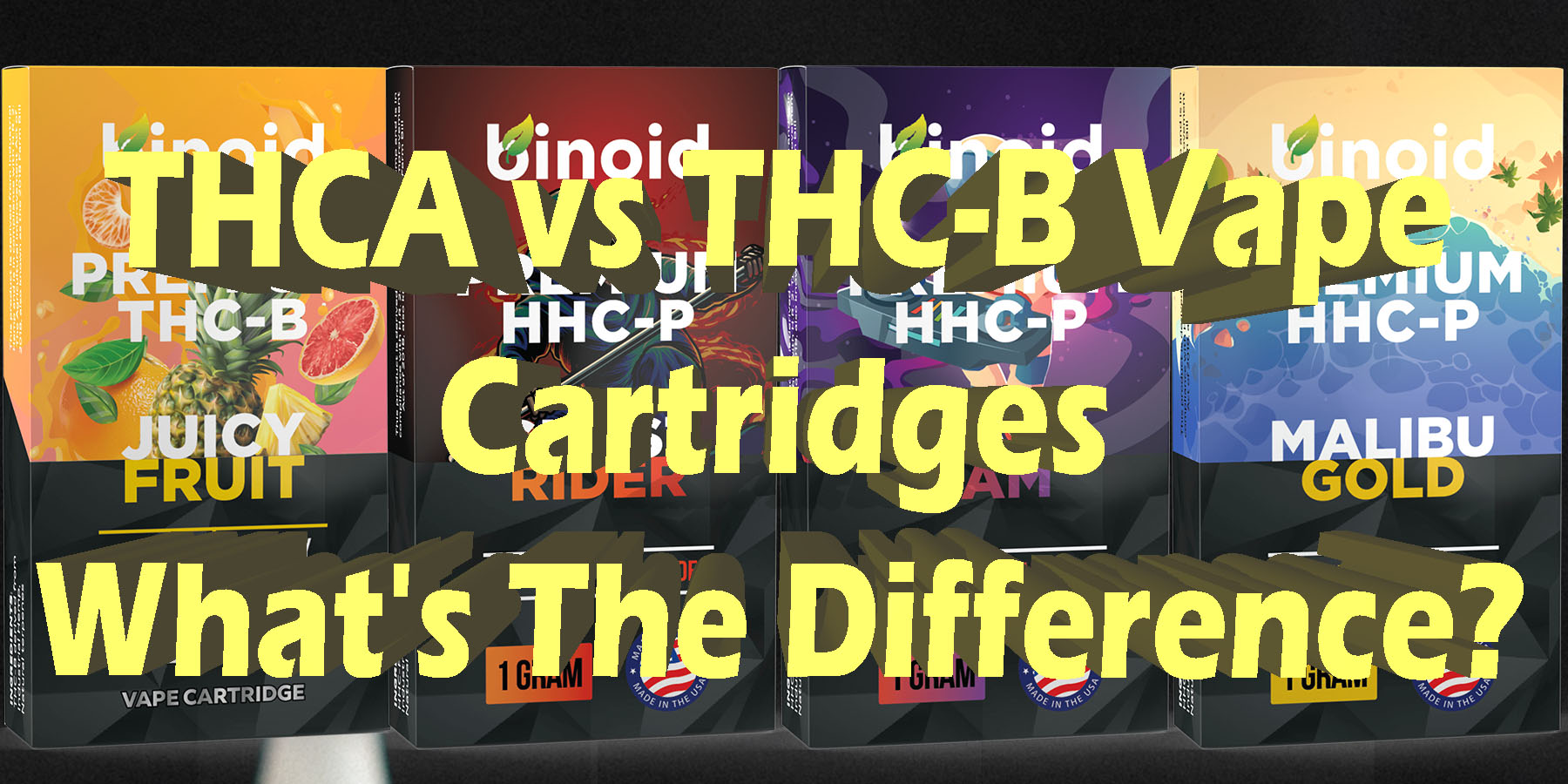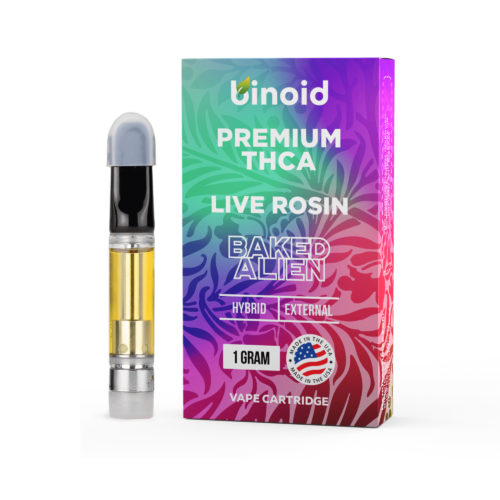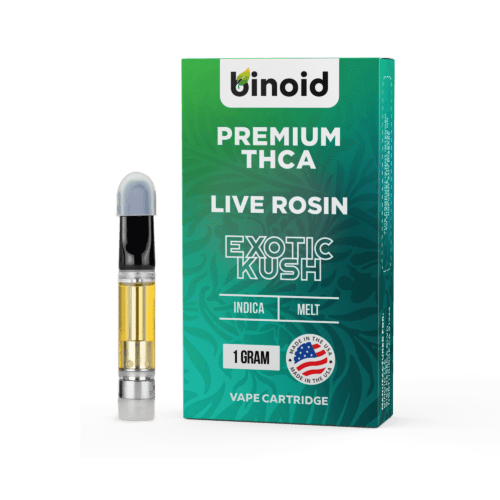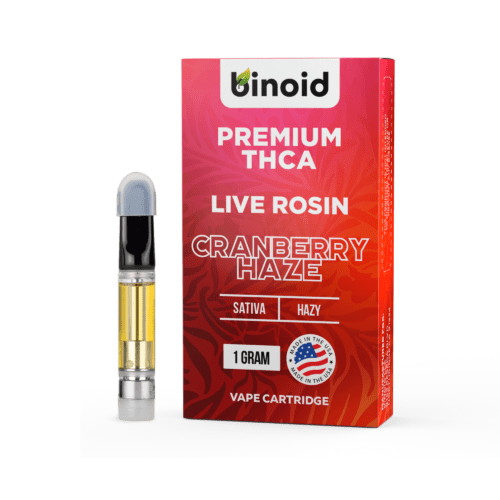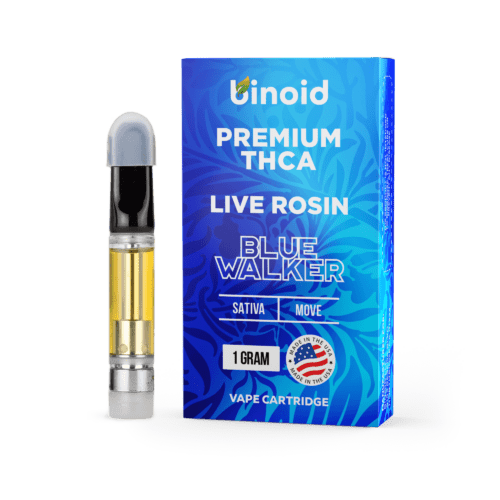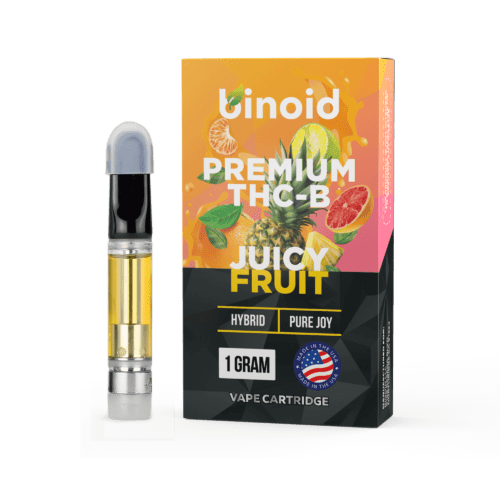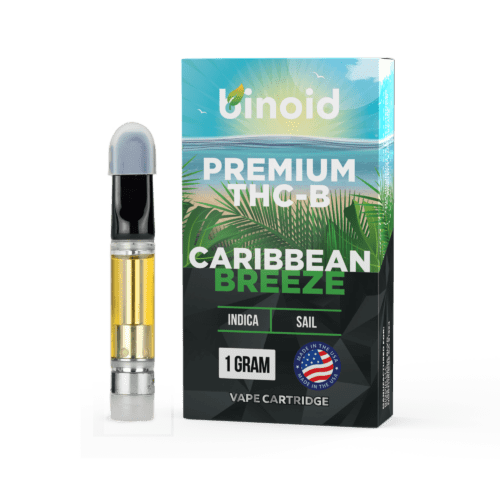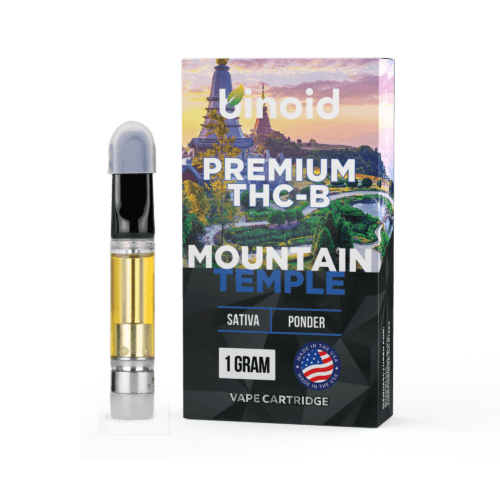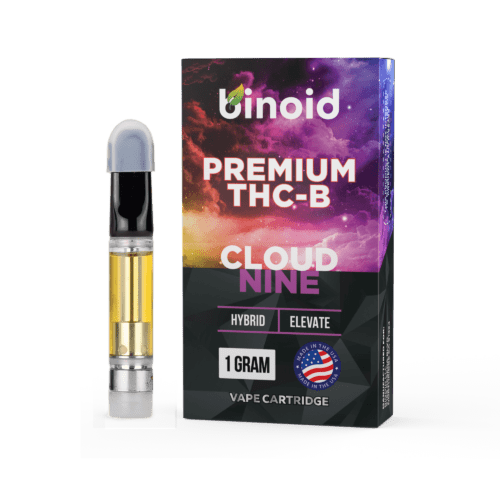In the sophisticated world of modern cannabinoids, the most compelling conversations often revolve around two key qualities: the nuanced character of the experience and the fundamental chemical structure of the molecule itself. One defines the subjective journey—its specific shade of euphoria, its intensity, and its feel in both mind and body. The other dictates its performance—its potency, its duration, and its unique interaction with our internal systems.
Rarely do two advanced compounds embody this fascinating dichotomy as perfectly as the subjects of our current exploration, especially when delivered through the precision of a vape cartridge. This brings us to a unique matchup: THCA vape cartridges vs. THC-B vape cartridges. The decision between them isn’t simply about potency, but about the very nature of the high-potency experience a user wishes to embrace.
To Buy Cannabinoid Vape Cartridges Click Here
Recommended products
What are Cannabinoids?
To truly appreciate the profound differences in the THCA and THC-B matchup, one must first possess a firm understanding of the fundamental building blocks of their composition: cannabinoids. In the broadest scientific sense, cannabinoids represent a diverse class of chemical compounds that are defined by their ability to interact with and influence the body’s endocannabinoid system. These compounds are the primary active ingredients responsible for the effects associated with the cannabis plant, but their origins are not confined to botanical sources alone.
The scientific community generally categorizes these molecules into three distinct groups: phytocannabinoids, which are synthesized by plants (most famously, the Cannabis sativa plant); endocannabinoids, which are produced naturally within the bodies of humans and other vertebrate animals; and synthetic cannabinoids, which are created artificially in a laboratory setting. Phytocannabinoids, like the THCA and THC-B we are exploring today, have a molecular structure that allows them to interface with our bodies’ internal systems, orchestrating a complex symphony of physiological responses.
The discovery and subsequent understanding of this intricate relationship are rooted in the endocannabinoid system (ECS), a crucial and sophisticated cell-signaling network. The ECS plays a vital role in regulating a vast array of functions to maintain a state of internal physiological balance, a concept known as homeostasis. This system is composed of three core components: endocannabinoids (such as anandamide, often called the “bliss molecule,” and 2-arachidonoylglycerol, or 2-AG), which are the body’s own naturally produced cannabinoid molecules; receptors that these compounds bind to (primarily CB1 receptors, found mostly in the brain and central nervous system, and CB2 receptors, located predominantly in the peripheral nervous system and immune cells); and enzymes that metabolize and break down the endocannabinoids once they have served their signaling purpose.
Phytocannabinoids are able to produce their effects because their molecular shapes allow them to mimic or otherwise influence our natural endocannabinoids, binding to these same receptors and thus modulating cellular activity.
Within the vast family of over one hundred identified phytocannabinoids, there is a clear and important distinction between major and minor compounds, as well as a distinction between their active and acidic forms. Major cannabinoids, such as cannabidiol (CBD) and the well-known Delta 9 THC, are the most abundant active compounds and have been the subject of extensive scientific research and public discussion for many decades.
In contrast, minor cannabinoids exist in much smaller, often trace, amounts. Furthermore, most cannabinoids exist in the raw cannabis plant in an acidic form, such as THCA and CBDA. These are known as cannabinoid acids and are the biosynthetic precursors to the active compounds we are more familiar with. THCA, for example, is a major cannabinoid in its raw form, often the most abundant compound in uncured hemp flower.
This fundamental distinction between different types of cannabinoids is absolutely essential to understanding the landscape of the modern hemp industry. The 2018 Farm Bill, a landmark piece of federal legislation, federally legalized hemp and all hemp-derived products, provided they contain no more than 0.3% Delta 9 THC by dry weight.
This legal framework, while sharply focused on restricting the specific molecule of Delta 9 THC, inadvertently created a massive opportunity for the scientific exploration and commercialization of other cannabinoids that could be legally sourced from compliant hemp. This legal pathway, combined with significant advancements in agricultural breeding, chemical conversion, and purification techniques, has directly enabled the rise of products.
Recommended products
What are Cannabinoid-Infused Vape Cartridges and How are They Typically Created?
Cannabinoid-infused vape cartridges, often simply called “vape carts,” are small, pre-filled containers that hold a liquid formulation of purified cannabinoid distillate and, typically, aromatic terpenes. These self-contained units are meticulously engineered to attach to a compatible battery, commonly known as a vape pen or 510-thread battery, which provides the necessary electrical power to heat the liquid and instantaneously transform it into an inhalable vapor. The primary function of a vape cartridge is to offer a convenient, discreet, and highly efficient method for consuming cannabinoids.
Unlike other consumption methods that require more preparation or have a significantly delayed onset, such as edibles, vaping allows for the rapid delivery of the active compounds directly into the bloodstream through the vast surface area of the lungs. This results in effects that can be felt almost immediately, often within a matter of minutes, providing users with unparalleled control over their experience as they can take small draws and precisely gauge the effects before deciding to continue.
The marketplace for cannabinoid vape cartridges is incredibly diverse, with products available in a multitude of shapes, sizes, and materials designed to suit various consumer preferences and accommodate ongoing technological advancements. The most ubiquitous size is the 1-gram (or 1mL) cartridge, which offers a substantial amount of oil that serves as a happy medium for both regular and occasional users. However, smaller half-gram options remain popular for those wishing to sample a new strain, while larger 2-gram, 3-gram, and even 5-gram disposable vape pens have emerged for users seeking maximum convenience and longevity.
In terms of shape, the classic cylindrical design with a 510-thread connection remains the undisputed industry standard due to its near-universal compatibility with the vast majority of batteries. Yet, some brands have pioneered proprietary pod-style systems that often feature a sleeker, more modern aesthetic and a magnetic connection, although they require a specific, brand-locked device to function. The materials used in cartridge construction are also a key differentiator, profoundly impacting performance, safety, and the purity of the user experience, with a clear hierarchy from basic plastics to premium glass and ceramic constructions.
While external designs may vary, the core components of a standard vape cartridge are universal and work in precise concert to deliver a smooth, flavorful, and consistent experience. Each part plays a critical, non-negotiable role in the device’s function, from the point of contact with the user to the electrical connection with the power source. A detailed breakdown reveals the intricate design that ensures safety and proper function:
Mouthpiece: This is the uppermost part of the cartridge through which the user inhales the vapor. Mouthpieces are crafted from a variety of materials, including common options like plastic, more premium choices like heat-resistant ceramic, and stylish alternatives like metal or wood. The shape can also differ—flat, rounded, or ergonomically contoured (“duckbill”)—to enhance comfort. The material choice is not merely aesthetic; ceramic mouthpieces, for instance, are excellent at dissipating heat, ensuring a cooler and more comfortable draw.
Tank/Reservoir (Chamber): The tank is the main body of the cartridge that holds the precious cannabinoid-infused oil. It must be transparent to allow the user to monitor the remaining liquid. While some budget cartridges may use polycarbonate plastic, high-quality tanks are almost exclusively made from borosilicate glass. This type of glass is highly durable and, most importantly, non-reactive, ensuring that there is no chemical leaching into the oil, which could alter the flavor and compromise the purity of the terpenes and cannabinoids.
Atomizer/Heating Element: The atomizer is the functional heart of the cartridge, responsible for heating the oil to its precise vaporization point (typically between 300-400°F). It consists of a heating coil wrapped around or embedded within a wicking material that draws in the oil. In modern, high-end cartridges, the atomizer core is made of a porous ceramic. This technology, often referred to by brand names like CCELL, provides exceptionally even heat distribution and a larger surface area, which prevents direct contact between the hot coil and the oil. This indirect heating is crucial for preventing burning, which would create a harsh taste and potentially harmful byproducts, and for preserving the delicate and complex flavor profile of the terpenes.
Base/Connector: The base is the bottom part of the cartridge that houses the atomizer and features the threading used to connect the device to a battery. The most common type is the 510-thread (referring to the 10 threads at 0.5 mm per thread), which has become the universal standard, ensuring interoperability between most cartridges and batteries on the market. The base also contains the airflow intakes—small holes that allow air to enter and mix with the vapor—and the electrical connection point that draws power from the battery to activate the heating element when the user inhales or presses a button.
The production of a cannabinoid-infused vape cartridge is a meticulous, multi-stage process that merges precision manufacturing with sophisticated chemical science to ensure a safe, effective, and enjoyable final product. This complex journey can be broken down into three distinct parts: the fabrication of the physical hardware, the formulation of the specialized oil, and the final assembly and rigorous quality control.
Part 1: How the Cartridge Itself is Made and Constructed
The manufacturing of the empty cartridge begins with the high-precision fabrication of its individual components in specialized facilities. The borosilicate glass for the tank is molded and cut to exact specifications. The ceramic for the atomizer core is created from refined mineral powders, which are then fired at extremely high temperatures and shaped, after which the metallic heating coil is carefully integrated. The mouthpiece and base are also manufactured, often through injection molding for plastics or CNC (Computer Numerical Control) machining for metals. These separate parts are then assembled in a sterile, dust-free clean-room environment (often adhering to ISO standards) to prevent any contamination. Throughout this process, stringent quality control is paramount, with manufacturers conducting tests for air-tightness to prevent leaks, ensuring proper airflow resistance for a good draw, and verifying that the electrical connections are sound and the 510-threading is perfectly machined.
Part 2: How the Cannabinoid-Infused Vape Oil is Made
This highly scientific stage starts with legally compliant, high-quality hemp biomass. The cannabinoids are first extracted from the plant material using various methods. For stable distillates, supercritical CO2 or ethanol extraction is common. For more volatile, full-spectrum extracts rich in acidic cannabinoids, cold extraction methods using solvents like butane or propane are often used to create “live resin.” After extraction, the oil is refined. For minor cannabinoids, this may involve complex isomerization to convert a precursor like CBD into the target molecule. For major cannabinoids, it may involve distillation to achieve high purity. Finally, this purified oil is formulated, often by reintroducing carefully selected terpene profiles to create the desired flavor, aroma, and strain-specific effects.
Part 3: Bringing It All Together
In the final stage, the precisely formulated cannabinoid and terpene mixture is gently heated to reduce its viscosity and is then carefully injected into the empty, assembled cartridges. This is typically done using automated filling machines in a sterile environment to ensure dosage consistency and prevent contamination. Once filled, the cartridges are securely capped or sealed to create an airtight container that prevents any leakage. The last and arguably most critical step is comprehensive third-party lab testing. A statistically significant sample from each batch is sent to an independent, ISO-accredited laboratory. There, it is tested for potency (to confirm cannabinoid percentages), purity (to ensure it is free from residual solvents, heavy metals, pesticides, and microbial contaminants), and legal compliance (to verify the Delta 9 THC level is at or below the 0.3% threshold). Only after passing these rigorous tests is the batch approved for packaging and release to the market.
Recommended products
Breaking Down Today’s Cannabinoid Vape Cartridges Matchup: THCA Vape Cartridges vs. THC-B Vape Cartridges
With a clear understanding of cannabinoid fundamentals and vape cartridge production, we can now examine the main event. This is a particularly fascinating matchup because it pits a synthesized isomer against a synthesized homolog, highlighting the incredible intersection of chemistry, technology, and legality in the modern hemp industry. This is not a simple comparison of effects, but a deep dive into two fundamentally different types of products that, through different means, have become titans of the market. On one side stands THCA and on the other stands THC-B.
Contender #1: THCA Vape Cartridges
Entering the matchup is a powerhouse that operates on a fascinating principle of chemical transformation: THCA. Vape cartridges containing THCA have exploded in popularity, appealing to consumers who seek the authentic and potent effects of traditional cannabis within the federally legal hemp market. Unlike other hemp-derived cannabinoids that offer an alternative experience, THCA offers the classic experience itself, unlocked by the simple act of heating.
These products are celebrated for delivering the familiar, powerful, and cherished effects of Delta 9 THC, because upon vaporization, that is precisely what THCA becomes. This has positioned THCA cartridges as the go-to choice for connoisseurs and experienced users who want the genuine article, leveraging a brilliant quirk of chemistry and law.
At its core, THCA (Tetrahydrocannabinolic Acid) is the direct, non-psychoactive acidic precursor to the renowned Delta 9 THC. In the living, raw cannabis and hemp plant, cannabinoids exist primarily in these acidic forms, and THCA is often the most abundant of them all, acting as the “mother molecule” from which THC is born. It is essentially Delta 9 THC with an extra carboxyl group (COOH) attached, which acts as a molecular “safety lock.” This extra group makes the THCA molecule significantly larger and changes its three-dimensional shape, rendering it incompatible with the brain’s CB1 receptors. This fundamental inability to bind effectively is precisely why consuming raw, unheated cannabis is not intoxicating, allowing individuals to explore the properties of the raw cannabinoid acid without a psychoactive experience.
The magic of THCA lies in its transformation through a simple chemical reaction known as decarboxylation. When THCA is exposed to a sufficient amount of heat (typically starting around 220°F or 105°C), the energy breaks the chemical bond holding the carboxyl group, which is then released from the molecule as carbon dioxide. This process removes the “safety lock,” causing the molecule to shrink and change its shape into the psychoactive Delta 9 THC—the perfectly formed “key” for the CB1 receptor “lock.”
In a vape cartridge, the atomizer coil flash-heats the oil to temperatures far exceeding this threshold, ensuring that this conversion happens instantaneously and with high efficiency. Therefore, the entire premise of a THCA vape product hinges on this brilliant, on-demand transformation: the oil in the cartridge is federally compliant, non-psychoactive THCA, but the vapor the user inhales is potent, psychoactive Delta 9 THC.
Now, the market for THCA vape cartridges is incredibly dynamic, with a strong focus on purity, potency, and preserving the natural essence of the plant. Because THCA is a major cannabinoid in its raw form, its production methods and product types differ significantly from those of synthesized minor cannabinoids like Delta 10.
Shapes & Sizes: THCA cartridges are readily available in the most popular formats, including 1-gram and 2-gram 510-thread cartridges and all-in-one disposable vapes. The form factor is standard, but the nature of the oil inside is often a key differentiator, with many products boasting high-end extracts.
How They’re Constructed: Given that THCA products are marketed to connoisseurs seeking an authentic experience, they are almost exclusively found in high-quality hardware. This means premium ceramic atomizers designed to vaporize the oil cleanly and preserve flavor, paired with non-reactive borosilicate glass tanks. Quality construction is paramount to delivering the potent and flavorful experience users expect.
Potential Use of Live Resin or Live Rosin: This is where THCA products truly shine. Many of the most sought-after THCA cartridges are not made with a simple distillate, but with “live resin” or “liquid diamonds.” Live resin is extracted from flash-frozen plants to preserve the full spectrum of terpenes and cannabinoids, while “liquid diamonds” refers to pure, crystallized THCA that is then mixed with terpene-rich sauce. These formats offer a profoundly flavorful and robust experience that is as close as one can get to the raw flower.
Strain-Infused: The effects of a THCA cartridge (which are the effects of Delta 9 THC) are heavily directed by the terpene profile. These terpenes are almost always cannabis-derived, often from the very same plant the THCA was extracted from, ensuring a true-to-strain Sativa, Indica, or Hybrid experience. This authenticity is a major selling point for these products.
Sometimes Combined with Other Cannabinoids: While many THCA cartridges aim for purity, they are also used in sophisticated blends. The goal is often to create a more nuanced or legally compliant product.
Non-Intoxicating: It is rare to see THCA blended with non-intoxicating cannabinoids in a vape, as its primary purpose is to convert to THC.
Mild Potency: It’s uncommon to find THCA in mild potency blends, as it is inherently a high-potency product once vaped.
Moderate Potency: THCA is frequently blended with Delta 8. This creates a product that offers the powerful, classic effects of Delta 9 THC (from the THCA) alongside the smoother, relaxing body feel of Delta 8, resulting in a unique and well-rounded hybrid experience.
Strong Potency: To create the most powerful experiences possible, formulators will create blends of pure, high-potency THCA live resin or combine THCA with other potent cannabinoids like THC-P or THC-JD. These products are designed for users with the highest tolerances seeking maximum intensity.
The overall effects of a THCA vape cartridge are, simply put, the effects of Delta 9 THC. Upon heating via the vape’s atomizer, the THCA instantly converts, delivering a potent, classic, and deeply euphoric experience. Its functional aspect is its strength and familiarity; it provides the authentic psychoactive effects that have defined cannabis for generations.
This core experience is then beautifully sculpted by the extract type and strain. A live resin Sativa THCA cart will produce an energetic, cerebral, and creative buzz with an explosion of authentic flavor. An Indica THCA “liquid diamond” cart will deliver a profoundly relaxing, blissful, and body-focused experience. When blended with Delta 8, the sharp potency of the resulting Delta 9 is smoothed out, creating a more balanced and less overwhelming, yet still powerful, hybrid journey.
Recommended products
Pros & Cons
THCA vape cartridges come with a powerful set of benefits and a significant set of considerations, particularly regarding their unique legal status. Understanding this balance is crucial for any consumer.
Pros:
Authentic and Potent Effects: When vaped, THCA provides the genuine Delta 9 THC experience. For users seeking the classic, potent, and familiar effects of traditional cannabis, THCA cartridges deliver exactly that. There is no need to approximate the feeling, as the chemical conversion provides the real thing, offering a powerful and authentic journey. This makes it the top choice for purists who want an undiluted, traditional high.
Federally Legal Status (Current Interpretation): The primary driver of THCA’s popularity is its legal status. Because the product in its unheated state contains THCA and less than 0.3% Delta 9 THC, it is sold as a federally legal hemp product under the 2018 Farm Bill. This has made the effects of Delta 9 THC accessible in many states where traditional marijuana is illegal. This allows for a unique intersection of legal accessibility and potent, authentic effects.
Wide Accessibility: Due to its legal positioning, THCA vape cartridges can be purchased from online retailers and in stores in many states across the country. This provides a level of accessibility and convenience that is not possible for products from state-licensed marijuana dispensaries, which cannot cross state lines. For consumers in states without legal cannabis programs, this offers a legitimate, lab-tested avenue to access these effects.
High-Quality Extract Options: The THCA market is heavily geared towards connoisseurs, which has led to a proliferation of high-end product formats. Consumers can readily find THCA in premium forms like live resin, live rosin, and liquid diamonds, which offer a superior flavor and a more robust, full-spectrum experience compared to standard distillates. These advanced extracts preserve the natural essence of the plant for a truly gourmet experience.
Familiar Experience for Seasoned Users: For individuals with a long history of cannabis use, the effects of THCA are instantly recognizable and familiar. There is no guesswork or learning curve involved in understanding the experience. This predictability is a major advantage for seasoned users who know exactly what they are looking for in a product and want to avoid the novel effects of other, less-known cannabinoids, ensuring a comfortable and reliable session every time.
Rapid and Powerful Onset: Just like other vaped cannabinoids, the effects of vaped THCA (as Delta 9 THC) are felt within minutes. This rapid onset provides immediate and powerful effects, allowing users to quickly achieve their desired state. It also allows for careful dose titration, though the potency requires much smaller doses. This is ideal for those who want immediate results without the long wait associated with edibles.
Excellent Flavor Profiles: Because many THCA vapes are made with live resin and other full-spectrum extracts, they often boast incredibly rich and authentic terpene profiles. This results in a superior taste and aroma that is true to the original cannabis strain from which it was extracted, offering a gourmet vaping experience. The flavor is often described as more nuanced and “dank” than cartridges that use distillates with added botanical terpenes.
Synergistic and Full-Spectrum Benefits: High-quality THCA extracts like live resin contain not only THCA but also a host of other minor cannabinoids and terpenes from the original plant. When vaped, this full spectrum of compounds works together in what is known as the entourage effect, creating a more nuanced, well-rounded, and effective experience than an isolated cannabinoid can provide on its own. This leads to a more complex and satisfying high.
Cons:
Complex and Contentious Legal Gray Area: The biggest con of THCA is its precarious legal status. While sellers operate under the 2018 Farm Bill, many legal experts and some states argue that a product that becomes Delta 9 THC upon use is illegal. The legal landscape is constantly changing, and a future federal or state ruling could reclassify these products, making them subject to seizure or prosecution. This creates a significant risk for consumers.
Will Cause a Failed Drug Test: Since vaping THCA results in the user inhaling and metabolizing Delta 9 THC, it will absolutely cause a failed drug test for marijuana. The body does not distinguish between THC that came from a legal THCA product and THC from a state-legal marijuana product. The resulting metabolites are identical. This is a critical consideration for anyone subject to workplace or other forms of drug screening.
Can Be Too Potent for Beginners: The effects of vaped THCA are strong. For a newcomer or an individual with a low tolerance, the experience can be intensely overwhelming and potentially uncomfortable, leading to feelings of paranoia or anxiety. These products are generally not recommended for beginners, who would be better served by a milder cannabinoid like Delta 8 to start their journey.
Potential for Increased Scrutiny and Regulation: The explosive popularity of THCA products has drawn significant attention from lawmakers and regulatory bodies. There is a high likelihood that these products will face increased scrutiny, new testing requirements (such as “total THC” testing post-decarboxylation), or outright bans in the near future. This makes the long-term availability of these products uncertain and makes it a potentially risky market for consumers to invest heavily in.
Recommended products
Contender #2: THC-B Vape Cartridges
Entering the matchup is a powerful and deeply euphoric contender that has been steadily gaining acclaim among experienced cannabinoid users: THC-B. Vape cartridges featuring this potent compound represent a significant step up from both Delta 8 and traditional Delta 9 THC, offering an experience characterized by intense bliss and profound full-body effects. THC-B (short for Tetrahydrocannabutol) is a homolog of THC, and its unique molecular structure allows it to interact with the body’s cannabinoid receptors with remarkable strength. This has positioned THC-B vape cartridges as a premium choice for those seeking a powerful, immersive, and deeply relaxing journey that goes beyond the ordinary.
At its core, the power of THC-B (Tetrahydrocannabutol) comes from its unique chemical structure, which was officially and fully characterized by a team of Italian researchers led by Dr. Giuseppe Cannazza in 2019. Using advanced liquid chromatography and mass spectrometry on a medicinal cannabis strain known as FM2, their study, published in the journal Scientific Reports, confirmed the existence of a butyl phytocannabinoid series, with THC-B as a key member.
However, while this was the first full characterization, evidence suggests the compound was detected much earlier. Reports indicate that the famous American chemist Roger Adams may have studied it as far back as 1942, and researchers at Oxford University identified it using early gas chromatography/mass spectrometry (GC/MS) in 1976, with another study in 1997 also reporting the identification of butyl homologues. The reason it took until 2019 for a full confirmation is that THC-B exists in such extremely low concentrations in the plant that only modern, highly sensitive analytical techniques could unequivocally isolate and define it.
This landmark research confirmed what earlier studies suspected: THC-B is a homolog of Delta 9 THC, meaning it shares the same foundational structure but differs in the length of its alkyl side chain. While Delta 9 THC has a 5-carbon (pentyl) side chain, THC-B possesses a 4-carbon (butyl) side chain. Preliminary research and a wealth of anecdotal evidence suggest that this specific structure allows it to bind with exceptional affinity to both the CB1 and CB2 receptors.
This strong interaction is believed to be the source of its significant potency, which is widely reported to be stronger than that of Delta 9 THC. Like other rare cannabinoids, because THC-B is found in only trace amounts in the cannabis plant, making direct extraction impractical, it is consequently synthesized in a laboratory from more abundant cannabinoid precursors. This process requires advanced chemistry and meticulous purification to create the potent, high-quality distillate used in today’s vape products.
Now, the market for THC-B vape cartridges is geared towards the experienced consumer who is looking for a potent and reliable experience. Much like other ultra-potent cannabinoids, THC-B is often used as a key component in a blend rather than as a standalone ingredient, designed to deliver a powerful and well-rounded effect.
Shapes & Sizes: THC-B cartridges are typically offered in the industry-standard 1-gram, 2-gram, and even larger disposable formats. The hardware is often high-quality to match the premium nature of the oil inside. For consumers, the most important factor is not the size of the cart but the concentration of THC-B within the blend, which should be clearly stated and verified by lab reports.
How They’re Constructed: Brands offering potent cannabinoids like THC-B understand that the user experience is paramount. Therefore, these blends are almost exclusively housed in cartridges made with premium materials, including non-reactive borosilicate glass tanks and advanced ceramic core atomizers. This ensures that the powerful and flavorful oil is vaporized efficiently and cleanly, delivering a smooth draw without any burnt taste or risk of hardware-related contaminants.
Potential Use of Live Resin or Live Rosin: To create a truly top-tier experience, many brands are blending THC-B with live resin. In these products, a base of full-spectrum live resin (often containing Delta 8 or other cannabinoids) is enhanced with a carefully measured percentage of pure THC-B distillate. This combination offers the best of both worlds: the authentic, terpene-rich flavor of live resin and the supercharged, euphoric effects of THC-B.
Strain-Infused: The intense effects of THC-B are carefully guided by the terpene profile of the blend. An Indica-dominant terpene profile, rich in myrcene and linalool, will steer the experience towards profound full-body relaxation and deep, blissful calm. A Sativa-dominant profile, with terpenes like limonene and terpinolene, will aim the potent effects towards a more soaring, happy, and cerebrally uplifting euphoria, making it suitable for creative or social settings.
Sometimes Combined with Other Cannabinoids: As a potent synthesized cannabinoid, THC-B is an all-star player in cannabinoid blends, acting as the primary driver of euphoria and intensity.
Non-Intoxicating: THC-B is not used in non-intoxicating blends due to its inherent potency.
Mild Potency: It is not typically found in mild potency blends, as its presence immediately elevates the strength of the product into the moderate or strong category.
Moderate Potency: This is a common application for THC-B. A blend of a primary cannabinoid like Delta 8 with a moderate percentage of THC-B creates a powerful yet balanced experience that is a significant step up from Delta 8 alone.
Strong Potency: To achieve the most profound effects, formulators will create blends with high concentrations of THC-B or will combine it with other powerhouse cannabinoids like THC-P or THC-JD. These formulations are designed exclusively for users with the highest tolerances seeking the most intense experience available.
The overall effects of a THC-B vape cartridge are defined by a potent, fast-acting, and deeply euphoric high that is often described as being stronger and more immersive than Delta 9 THC. The core experience is one of intense bliss coupled with a significant full-body sensation, making it both cerebrally uplifting and physically relaxing. Its functional aspect is its sheer strength; it is a tool for achieving a profound state of euphoria and is generally better suited for recreational or evening use.
This baseline experience is then shaped by its formulation. When blended into an Indica live resin, THC-B can produce a deeply sedating and blissful body high, perfect for ultimate relaxation. When infused into a Sativa blend with Delta 8 as a base, it can create a manageable yet intensely happy and giggly experience, ideal for a fun night with friends.
Recommended products
Pros & Cons
THC-B‘s significant potency means its advantages and disadvantages are particularly pronounced. For the right user, it offers an unparalleled experience, but for the wrong user, it can be overwhelming. A clear understanding of these points is essential.
Pros:
Highly Potent Effects: THC-B is significantly stronger than Delta 9 THC, providing a powerful and intense psychoactive experience. For users who find traditional THC or Delta 8 to be lacking, THC-B offers a new level of intensity and a much more profound journey into euphoria. This potency means that less product is needed to achieve a desired effect, which is a major draw for seasoned consumers looking for efficacy and strength.
Unique Full-Body Sensation: Many users report that the effects of THC-B are particularly noticeable throughout the body, creating a unique physical experience. It is often described as providing a warm, buzzing, and deeply relaxing sensation that complements its powerful mental euphoria. This makes it an excellent choice for those seeking a holistic, mind-and-body journey, as opposed to a purely cerebral or heady feeling.
Deep and Immersive Euphoria: The quality of the euphoria produced by THC-B is often described as being particularly deep and encompassing. Rather than a light or fleeting feeling of happiness, it is reported to be a profound sense of well-being, contentment, and bliss. This quality makes it highly desirable for recreational use, such as becoming fully immersed in music, art, or film on a deeper level.
Effective for High-Tolerance Users: For consumers who have built up a significant tolerance to other cannabinoids, THC-B offers a potent solution. Its strong binding affinity for the cannabinoid receptors can effectively activate pathways that may have become desensitized from the prolonged use of less potent compounds. This allows experienced users to once again achieve the powerful effects they may no longer get from other products.
Long-Lasting Experience: The effects of THC-B are known to be quite durable, offering a sustained experience that can last for several hours. For users who want to settle in for a long evening of relaxation or entertainment, this extended duration is a major benefit. It provides a reliable and long-lasting plateau of blissful effects without the need for frequent re-dosing, making it ideal for a weekend or a day with no other obligations.
Excellent Performance in Blends: THC-B works exceptionally well as a primary active ingredient in cannabinoid blends, acting as a powerful amplifier. When added to a base of Delta 8, for example, it doesn’t just add a little strength; it fundamentally transforms the character of the experience into a powerful euphoric powerhouse. This allows formulators to create a wide spectrum of effects, using THC-B as the engine to drive the intensity of the entire product.
Novelty for Experienced Users: In a market with many similar-feeling products, THC-B offers a genuinely new and exciting experience for the cannabinoid connoisseur. Its unique combination of intense euphoria and strong physical effects provides a different feeling than other potent cannabinoids like THC-P. This novelty can prevent “cannabinoid fatigue” and rekindle a sense of discovery for even the most seasoned user.
Federal Legality Framework: Despite its significant potency, THC-B that has been synthesized from legal hemp cannabinoids falls under the purview of the 2018 Farm Bill. As long as the final product contains less than 0.3% Delta 9 THC, it is considered a federally legal hemp product. This critical legal distinction is what makes its powerful effects accessible to a wide audience of consumers in many states where traditional cannabis is not.
Cons:
Potency Can Be Overwhelming: The primary strength of THC-B is also its most significant risk, and this cannot be overstated. For anyone other than experienced, high-tolerance users, its effects can be far too intense. This can lead to feelings of being disoriented, overly intoxicated, or uncomfortable, making it a poor choice for social situations if you are not accustomed to it. It is not a cannabinoid for beginners under any circumstances.
High Risk of Overconsumption: Because it is so potent, the line between an enjoyable dose and too much is very thin, especially with the fast-acting nature of vaping. A user accustomed to other cannabinoids might take their usual puff size and find it is far too strong. The peak of the effect might be slightly delayed, tricking a user into taking a second puff too soon, which could lead to an unpleasantly intense experience that must simply be waited out.
Lacks Comprehensive Clinical Research: While THC-B was identified decades ago, its natural rarity meant it remained a scientific curiosity rather than a subject of significant study. As a result, there is a lack of the comprehensive, long-term human clinical trials that exist for major cannabinoids like Delta 9 THC and CBD. This means that while its basic pharmacology is understood, its long-term safety profile and full range of potential side effects are not well-documented, placing modern users at the forefront of its use.
Potential for Legal and Regulatory Changes: Like all potent, hemp-derived psychoactive cannabinoids, THC-B exists in a legal gray area that is highly subject to change. Because its effects are stronger than those of traditional Delta 9 THC, it is a prime target for future state-level bans or federal regulatory adjustments. This means its long-term availability on the legal market is uncertain, and its legal status could change without warning, which is a risk for both consumers and retailers.
Recommended products
Other Key Things You Should Know About When Choosing Either THCA Vape Cartridges or THC-B Vape Cartridges
As we have established, choosing between THCA and THC-B vape cartridges is a decision that requires a sophisticated understanding of their effects and unique chemical properties. A responsible, safe, and satisfying experience hinges on a holistic understanding of the product, from its agricultural origins as a humble hemp seed to the sophisticated hardware that delivers its vapor. The current hemp-derived cannabinoid market, while innovative and exciting, operates in a space with minimal federal oversight, which places the burden of due diligence squarely on the consumer.
So, to navigate this complex landscape safely and effectively, it is absolutely essential to look beyond the flashy marketing claims and scrutinize the factors that truly define a product’s quality, safety, and suitability for your specific needs. The following points provide a comprehensive checklist of critical considerations that every consumer should be aware of before making any purchase:
Source of Hemp: The absolute foundation of any high-quality cannabinoid product is the hemp from which it is derived. For THCA, cultivators focus on high-THCA hemp cultivars, as the molecule is extracted directly from the plant in its natural, acidic state. For THC-B, which is not found in significant quantities naturally, the journey typically begins with a pure, contaminant-free CBD extract from high-CBD hemp. This CBD serves as the precursor for the laboratory synthesis that creates THC-B. In both cases, transparent, US-grown sourcing is a non-negotiable factor for safety, as the integrity of the entire supply chain, from field to lab, is what ultimately guarantees the purity of the final product.
Third-Party Lab Testing (COAs): Third-party lab testing is the single most important factor for consumer safety, and with these potent cannabinoids, it is vital to read the Certificate of Analysis (COA) critically. For any product, a full panel screening for contaminants like residual solvents, heavy metals, and pesticides is essential to verify purity. For both THCA and THC-B, it is critical to look at the potency section to verify the exact percentage in the blend. A brand’s willingness to provide comprehensive, easily accessible, and up-to-date COAs for every single batch is the ultimate sign of transparency and commitment to consumer safety.
Extraction and Conversion Methods: Understanding the production method is key. THCA is a naturally occurring cannabinoid acid found in raw cannabis and hemp. It is typically extracted from the plant and remains in its non-psychoactive form until it is heated by the vape pen—a process called decarboxylation—which instantly converts it into the well-known Delta 9 THC. In contrast, THC-B is a converted cannabinoid created through chemical synthesis in a laboratory, usually by altering a precursor molecule like CBD. It is a homolog of THC, specifically a butyl homolog, meaning it has a 4-carbon side chain. This sophisticated process must be followed by extensive purification to ensure the final distillate is safe and free of byproducts.
Terpene Profiles: Terpenes are the aromatic compounds that define a strain’s unique flavor and aroma, and they play a crucial role in modulating the effects of cannabinoids through the entourage effect. In both THCA and THC-B cartridges, the base is a pure distillate, so terpenes must be added back into the final product to create the desired strain experience. The highest quality products will use either cannabis-derived terpenes (CDTs) or “live resin,” a full-spectrum extract from flash-frozen hemp. These options provide a much more authentic, complex, and “true-to-strain” flavor and a more nuanced effect compared to cartridges that use less expensive, botanically-derived terpenes.
Cartridge Hardware Quality: The precious oil inside the cartridge is only half of the equation; the quality and safety of the hardware itself are equally critical for a positive and safe experience. The best cartridges are constructed with high-quality, inert materials like borosilicate glass tanks and advanced ceramic heating elements to ensure the oil is heated evenly and never burned. Another critical but often overlooked component is the cartridge’s seals and gaskets. High-quality cartridges use durable, non-reactive materials like medical-grade silicone to prevent leaks and ensure that no part of the hardware degrades and leaches into the oil over time, which is a risk with terpene-rich formulations.
Your Personal Tolerance: Understanding your own body and tolerance level is fundamental. THCA, when vaped, provides the classic effects of Delta 9 THC, which is potent and should be respected by all users. THC-B, however, is reported to be significantly more potent than traditional Delta 9 THC and should only be consumed by experienced individuals with a high tolerance. A newcomer to cannabis should approach both with extreme caution, but especially THC-B. For either cannabinoid, the principle of “start low and go slow” is a critical safety mandate. This means beginning with the smallest possible puff (1-2 seconds) and waiting at least 20-30 minutes to fully assess the effects before considering more.
Desired Experience and Duration: The choice between these two cannabinoids comes down to the specific character of the high you are seeking. Are you seeking the classic, well-rounded, and familiar high of traditional cannabis? A THCA cartridge, which converts to Delta 9 THC, will deliver that balanced cerebral and physical experience. Are you seeking a more novel, immersive, and profoundly blissful experience with a powerful full-body component? A THC-B cartridge would be the more appropriate choice for that specific goal. It is also crucial to consider the psychological concept of “set and setting”—your mindset and environment—as a calm, safe setting is vital for a positive experience with these powerful compounds.
The Importance of the Battery (Vape Pen): The cartridge is only one part of the vaping system; the battery you pair it with significantly impacts the overall performance and experience. Using a quality battery with variable voltage settings is essential for high-end cartridges rich in flavorful terpenes. A lower temperature setting (e.g., 2.5V-2.8V) will preserve the delicate terpene profile and provide the best possible taste while ensuring the THCA properly converts. Beyond performance, basic battery maintenance is key for safety and longevity. It is important to keep the 510-thread connection point on both the battery and the cartridge clean with a cotton swab and isopropyl alcohol to ensure a good electrical connection and prevent firing issues.
Legal Landscape: The legal status of hemp-derived cannabinoids is extraordinarily complex. Both THCA and THC-B occupy a legal gray area based on the 2018 Farm Bill, which legalized hemp and its derivatives containing less than 0.3% Delta 9 THC. THCA products are sold on the basis that THCA itself is not Delta 9 THC. However, some jurisdictions consider “total THC” (THCA percentage multiplied by 0.877, plus the Delta 9 THC percentage), which can complicate its status. THC-B’s legality relies on it being a hemp-derived cannabinoid that is not Delta 9 THC. However, the DEA has suggested that cannabinoids created “synthetically” might not be considered legal hemp, creating uncertainty for converted cannabinoids like THC-B.
Brand Reputation and Transparency: In an industry with very little federal oversight, a brand’s reputation and its commitment to transparency are paramount indicators of quality and trustworthiness. For both THCA and THC-B, this means seeking out brands that provide full-panel COAs for every batch, verifying not just the potency but the absence of any harmful contaminants. Beyond lab reports, look for brands that invest in consumer education. A reputable brand will often have a professional website with detailed blog posts and FAQs that explain what these complex cannabinoids are, demonstrating a commitment to their customers’ safety and understanding that goes beyond simple marketing.
Understanding the Chemistry: THCA and THC-B have fundamentally different chemical structures that define their effects. THCA (tetrahydrocannabinolic acid) is the natural, non-psychoactive acidic precursor to Delta 9 THC. It features the same 5-carbon pentyl side chain but has an additional carboxylic acid group (COOH). When heated, this group is removed, and THCA becomes psychoactive Delta 9 THC. In contrast, THC-B (tetrahydrocannabutol) is a homolog of THC, meaning it shares the core structure but has a different length side chain—in this case, a 4-carbon (butyl) chain. This structural difference is what alters its binding affinity to cannabinoid receptors, making it distinctly more potent than Delta 9 THC.
Proper Storage and Maintenance: To get the most out of your investment, proper storage is key. All cannabinoid products degrade when exposed to heat, light, and oxygen, which diminishes their potency and flavor. THCA is particularly sensitive, as heat and light can cause it to prematurely convert (decarboxylate) into Delta 9 THC. Cartridges should always be stored in a cool, dark, and dry place, and always in an upright position to prevent leaks and ensure the wick stays saturated. For long-term storage, keeping them in an airtight container in the refrigerator is the optimal method for preservation.
The Tool vs. The Destination
The modern cannabinoid landscape now demands a new level of introspection from its users, forcing a crucial question: is the experience a means to an end, or the end itself? This is the fundamental philosophical divide between the two cannabinoids in this matchup. One molecule, with its focus-enhancing and functional character, presents itself as a sharp and precise tool—a key to unlock a state of productivity or to enhance a specific activity. The other, by transforming into the classic agent of euphoria, offers itself as the destination—a rich and authentic experience that is the very purpose of the session.
The ultimate decision for the informed connoisseur is not merely about choosing a feeling, but about defining the very purpose of their journey. In this sophisticated market, true mastery is found in the wisdom to distinguish when you need a tool to help you build, and when you simply wish to inhabit a beautiful, finished space.

